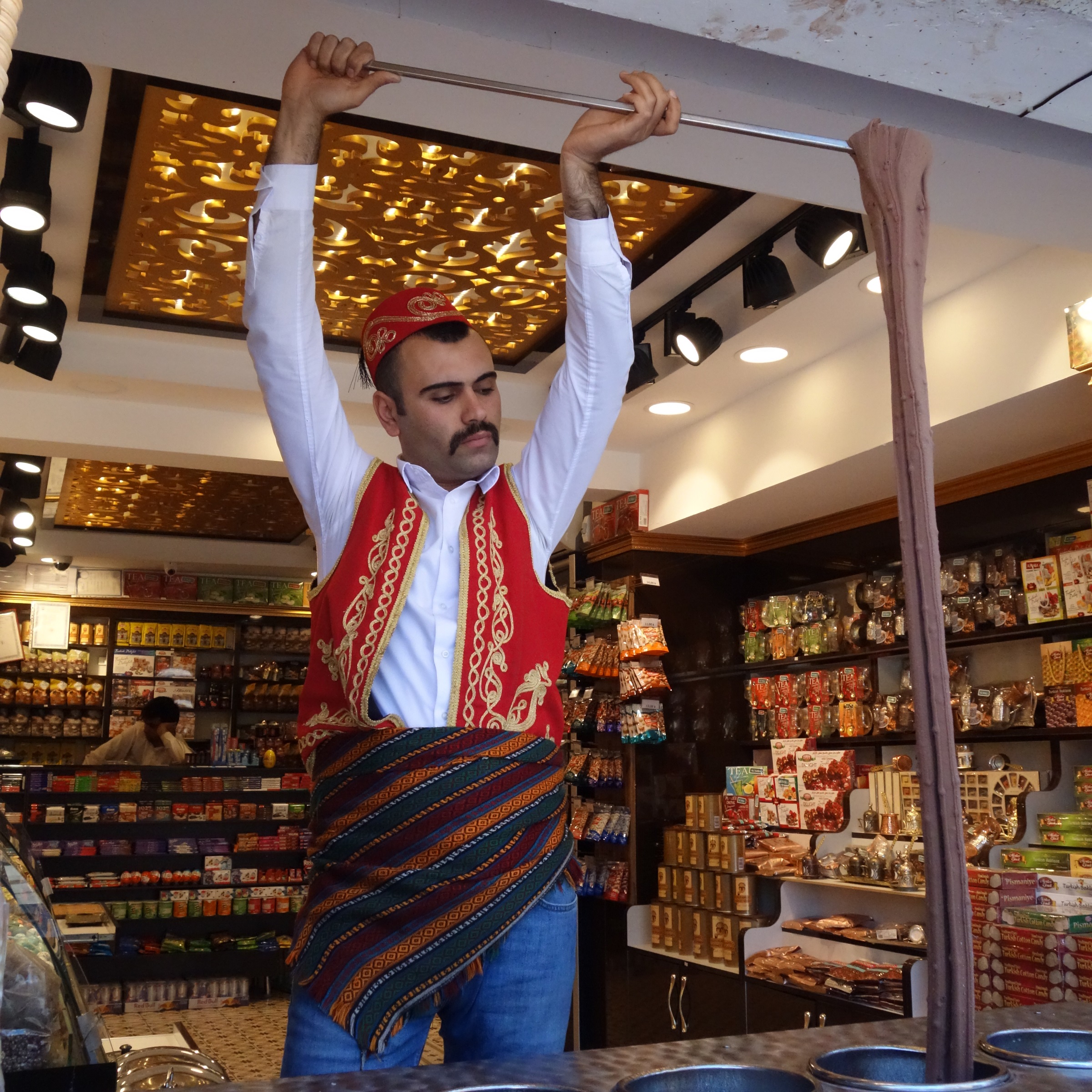Turkish ice cream “Dondurma” typically includes the ingredients cream, whipped cream, salep (ground-up tuber of an orchid), mastic (plant resin), and sugar. It is believed to originate from the city and region of Maraş and hence also known as Maraş ice cream
Description
Two qualities distinguish Turkish ice cream: hard texture and resistance to melting, brought about by inclusion of the thickening agents salep, a flour made from the root of the early purple orchid, and mastic, a resin that imparts chewiness.
The Kahramanmaraş region is known for maraş dondurması, a variety which contains distinctly more salep than usual. Tough and sticky, it is sometimes eaten with a knife and fork.
Consumption and culture
Turkish ice cream “Dondurma” is commonly sold from both street vendors’ carts and storefronts, where the mixture is churned regularly with long-handled paddles to keep it workable. Vendors often tease the customer by serving the ice cream cone on a stick and then taking away the dondurma with the stick by rotating it around, before finally giving it to the customer. This sometimes results in misunderstandings among customers unfamiliar with the practice. Vendors often wear the traditional clothing of the Ottoman period.
In some places in Turkey it is customary to treat the ice cream as a Shawarma and cut servings with a butcher knife.
As of 2010, the average rate of consumption in Turkey was 2.8 liters of ice cream per person per year (compared to the United States at 14.2 liters per person and world consumption leader Australia at 17.9 liters in 2010).
Turkish ice cream and the Turks
Some Turks believe that cold foods, such as ice cream, will cause illnesses – such as sore throats and the common cold; it is held that consumption of warm liquid while consuming ice cream will counteract these effects.
The popularity of salepli dondurma has caused a decline of wild orchids in the region and led to a ban on exports of salep.
Α distinct variation of dondurma is also consumed in Greece, especially in the north of the country, where it is called “dudurmas” or “kaimaki”.

